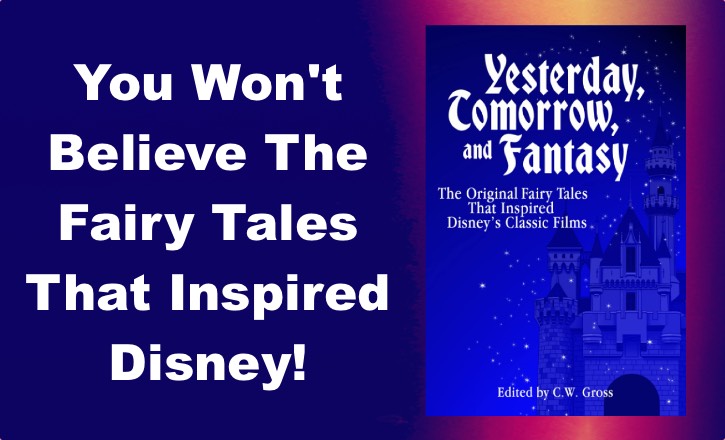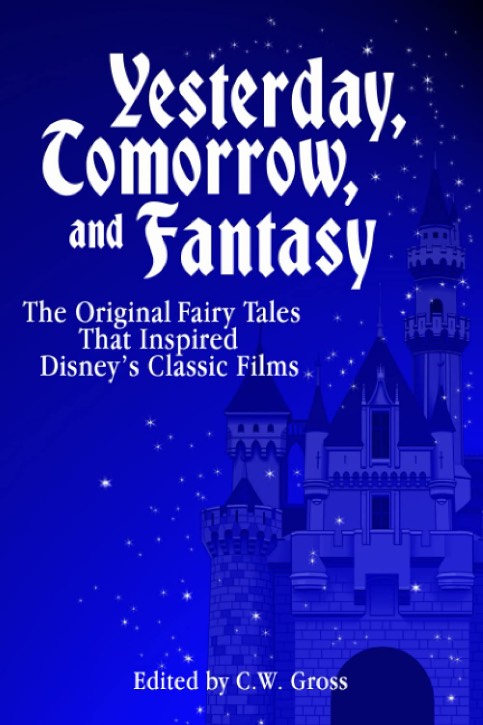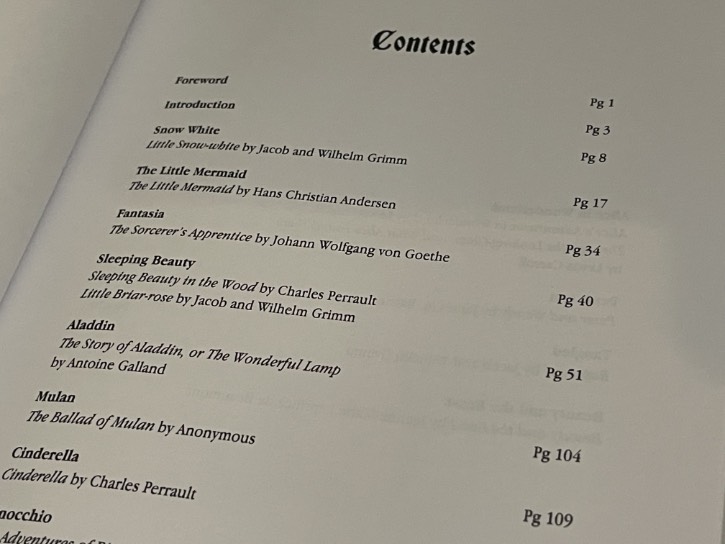You Won’t Believe These Fairy Tales that Inspired Disney!
Yeah, I feel kinda dirty for using clickbait this way, but I was surprised at some of the original fairy tales that inspired the classic fairy tales beloved by generations around the world.
Author, blogger, historian, critic (in a good way), and all-around good guy, C.W. Gross, has edited and published a work featuring early English translations of fairy tales by the Grimm Brothers, Hans Christian Andersen, Charles Perrault, Carlo Collodi, Kenneth Grahame, Lewis Carroll, and others. I’ve known C.W. (or Cory) for almost as long as I’ve been running ImagiNERDing. We supported each other during the Wild West days of blogging, as we both found our voices and eventually settled on larger projects (Cory has authored multiple volumes on Victorian and Antebellum Science Fiction). I was very excited when Cory asked me to review his new book focusing on the original fairy tales: Yesterday, Tomorrow, and Fantasy: the Original Fairy Tales that Inspired Disney’s Classic Films.
The stories you find herein are often quite different from the Disney films we know and love. Some are considerably more violent, befitting their origins in the Middle Ages. Some have hidden depths of meaning only hinted at in Disney’s adaptation. Some readers might be surprised at what the original version of the story has to say, while others may be surprised that what was spoken about the “original version” in hushed tones was also incorrect. “Did you know,” whispers Common Knowledge, as though passing along occult secrets, “that the Little Mermaid actually dies at the end?” Well no…Not exactly.
In this first volume (of three), Cory examines thirteen different fairy tales; each chapter contains a roadmap for the lay reader with historical context, information about the authors, and some of the expected and unexpected changes from the animated films. Then Cory regales us with a reprint on some of the first English translations of the different tales. It is a fascinating study of how fairy tales were presented, based on the culture of the times, and how they were adapted by modern sensibilities.
What Disney Fairy Tales Are Covered in the Book?
It’s an extensive list of fairy tales that Cory presents and examines.
- Snow White
- The Little mermaid
- Fantasia
- Sleeping Beauty
- Aladdin
- Mulan
- Cinderella
- Pinocchio
- The Adventures of Ichabod and Mr. Toad
- Alive in Wonderland
- Peter Pan
- Tangled
- Beauty and the Beast
At the beginning of each chapter, Cory offers a handful of pages to discuss the historical significance of the tale, as well as background on the original author (or the first person not record the fairy tale), the translator, and an interpretation of the differences in the tale and the animated film. Most surprising were the tales that not only deviated the most from the films, but also had many of the same beats and characters. The most bizarre was Aladdin, which told an almost incoherent version of the story we know; the one that was the most familiar was The Little Mermaid. And Pinocchio was the most absurd on so many levels, especially that it was over 70 pages. The little wooden boy just never gave up!
Cory provides through-provoking insight and goes a long way to help navigate the potentially confusing tales. His descriptions of the social mores, political and religious inclinations, and historical essence add tremendously to the value of the fairy tales.
For instance, in the introduction to the section on Tangled, Cory explains:
While the most common and least interesting possible interpretation of any given fairy tale is it being a metaphor for puberty, the reproductive cycle is unmistakable in Rapunzel. The story begins with a pregnant woman’s cravings, in this case for the leafy, lettuce-like plant called “rapunzel.” Such garden greens typically fall prey to expecting mothers’ predatory cravings for vitamins. Rapunzel, the plant, also known as “rampion” is an ornamental plant with purple bell-shaped flowers whose leaves are rich in Vitamin C and whose roots can be boiled and eaten like a carrot. Another plant is also identified with rapunzel in Germany, being a salad green with high Vitamin C, beta-carotene, B6, iron, and potassium.
How cool is that?
Who is Yesterday, Tomorrow, and Fantasy for?
Fans of the animated films mentioned in the book will love this title. Cory’s explanations and analyses of the fairy tales and their relation to the movies will delight scholars and laypersons interested in fairy tales. Cory adds to the scholarly research on Disney and the cultural effect, especially in relation to the animated films and their antecedents. Anyone who wants to take a deeper dive into the tales behind the animated films will enjoy this collection!





Oh this is right up my alley! I did a project during my master’s program for my storytelling class where I picked one fairy tale (Rapunzel) and looked at its origins plus how it’s been told in many different ways since then. I’m definitely adding this book to my list!